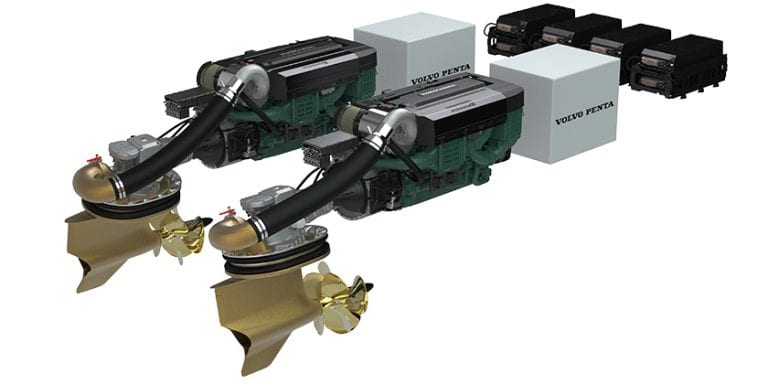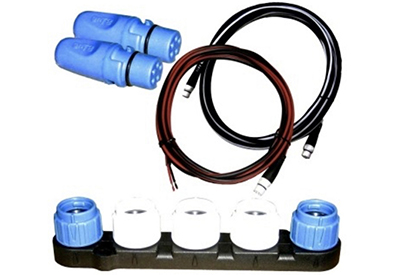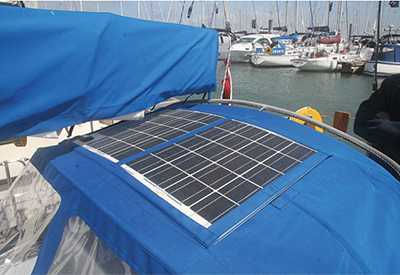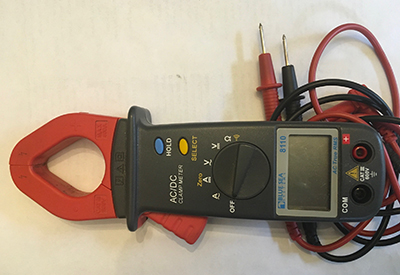Is a Battery Left Over a Year Any Good?
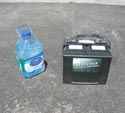
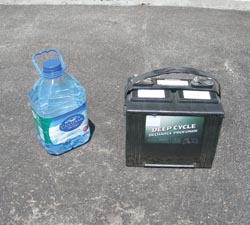 I’ve never seen an official survey on this, but I’ll bet the primary reason people wind up poking around in their engine room is because they have battery problems. Especially with today’s new fuel injected engines; your battery only needs to crank the engine over a couple of turns and it starts right up, running happily with your alternator charging and all systems go.
I’ve never seen an official survey on this, but I’ll bet the primary reason people wind up poking around in their engine room is because they have battery problems. Especially with today’s new fuel injected engines; your battery only needs to crank the engine over a couple of turns and it starts right up, running happily with your alternator charging and all systems go.
The boat starts, but are you really testing the efficiency of the battery? Problems arise when the battery is called on to run accessories or systems like your bilge pump. A battery that can deliver a short burst to start the engine may fade fast under a prolonged load.
The key issue for boaters: know how strong your battery is.
We’ve also been told that if you leave a battery unused for a year or more, that battery may be no good. Our winter storage advice recommends that you trickle charge your battery regularly to maintain the charge level. This prevents the battery plates from becoming “sulfated”. As the sulfation builds up on the battery plates, battery efficiency is reduced. If the buildup becomes too thick, the battery can short across the plates and at that point, it is junk. The process of sulfation is going on at all times and that is why a regular trickle charge is necessary to maintain the plates and acid in peak condition.
In the real world though, this is what happens to a lot of marine batteries. My own battery was in good condition when I stored it, but that boat didn’t get launched the next summer, so when I was ready to launch this year, my battery had been sitting in storage, far away, for close to two years.
To find out if the battery would be reliable, I took it over to my friends at Gary’s Service in Keswick, Ontario and asked them to load test my battery. The load test determines if the battery is in good condition or not. The tester measures the voltage that the battery is currently producing and then puts a ‘load’ on the battery similar to the draw if you turned the lights on or hit the starter. It leaves this load on for several seconds and the digital readout tells you if the voltage output is holding steady or dropping.
My 12-volt deep cycle battery only produced 9.1 volts. Gary disconnected it and said, “sorry, it’s dead”.
Enter the CTEK battery charger. One of the claims this product makes is that it can “restore” a deeply discharged battery. My hope was that by following the directions and using the CTEK Multi-7000, I could bring my deeply discharged battery back up to 12 volts.
That could save me the price of a new battery and keep my old battery from winding up in a recycle facility; better for the environment – better for my budget.
I got some distilled water, removed the battery caps and carefully topped up each cell to the fill mark. I connected the lines and let the CTEKs automatic function takeover. At first, it went to Charging mode; then it went to Restore mode. I watched to make sure all seemed OK and then left the battery charging overnight.
In the morning, the CTEK had gone from the Restore setting back to the Charge setting and was showing a Full Charge. I disconnected it and headed back to Gary’s Service. My previously dead battery that produced only 9.1 volts now registered 13.1 volts as though it was right back in shape…but the truth was revealed when we put the load test on.
My battery delivered 13 volts for a few seconds then dropped to 12.5, then 12 and down to 10.8 as the first load came off. A short time later, we repeated the load test and watched as the voltage reading dropped quickly from 12.8 down to 10.4 volts. Another few moments passed and the battery tester’s LED readout showed ‘battery dead’.
I admit that I was disappointed but not totally surprised. In preparation for this, I had called Jamie Surrette at Surrette Battery. I had asked him the loaded question: “Do you believe we can restore a dead battery?”
His answer was that it really depends on the battery; what condition it is in, what the quality level is and whether or not the battery was shorting out internally. Jamie told us, “You may be able to clear some of the sulfation with a really good quality charging system (as opposed to the inexpensive jobs that you get from some of the mass merchandise stores). A top-quality charger can deliver a higher voltage and by ‘pulsing’ that voltage, may be able to clear the plates more without overheating the battery.”
In essence, that’s what the CTEK charging system is attempting to do.
The only problem was that my battery was not a very good quality battery to begin with. The plates may be thinner, lead quality may be lower…there are a number of factors affecting quality. And, it is the quality issue that boaters care about because that determines the battery’s efficiency and how long it can put out the current you need at anchor, when the pump run, etc..
Enter the second piece of equipment: the new Xantrex Battery Monitor.
The Xantrex LinkPRO and LinkLITE Battery Monitor allow boaters to read their batteries bank like a fuel gauge, providing voltage statistics, battery capacity, charge and discharge current, all on a backlit LCD display.
The Xantrex LinkLITE is a more affordable alternative with fewer features but it still allows boaters to monitor two battery banks simultaneously. In addition, both come equipped with an internal programmable alarm relay that runs a generator when needed, or automatically turns off devices when the battery voltage exceeds programmable limits.
With these monitor capabilities, a boater can avoid the problems of a weak battery failing. It makes it pretty clear when you have good quality batteries compared to low quality ones. Then, you will know if the battery is worth the effort to re-charge or not.
So, is it a myth that a battery dies when you leave it unused for a year or more? Sadly, it seems that (for all but the top quality batteries), it is probably a reality.
By the way, I will use my battery this season (so that is good news) but only as a back up or spare. The CTEK charged it back up but the reliability won’t be there.

